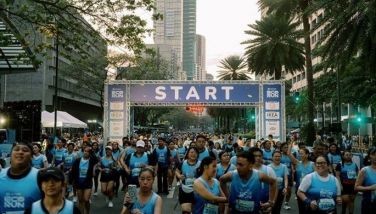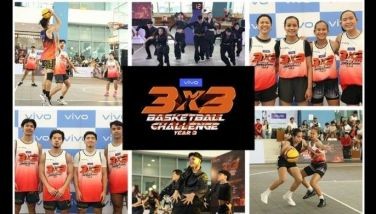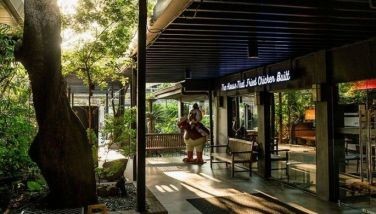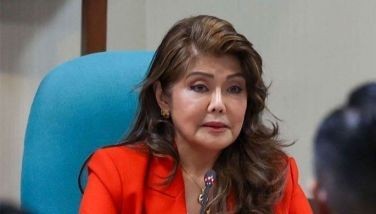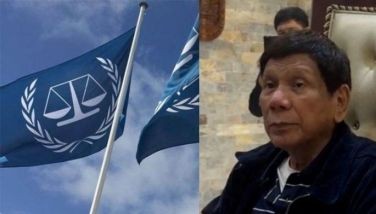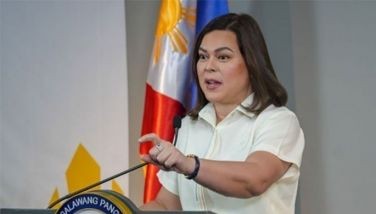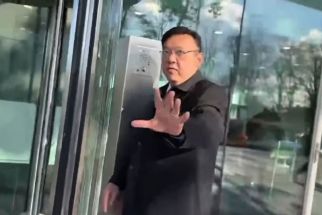Did anybody care enough?
September 14, 2006 | 12:00am
 Several things are abundantly clear in the Report of the University Athletic Association of the Philippines Fact-Finding Committee, dated April 17, 2006, on the alleged ineligibility of two De La Salle University senior basketball players during the 2002 through 2005 seasons (hereinafter, the "Report):
Several things are abundantly clear in the Report of the University Athletic Association of the Philippines Fact-Finding Committee, dated April 17, 2006, on the alleged ineligibility of two De La Salle University senior basketball players during the 2002 through 2005 seasons (hereinafter, the "Report):
One, the two players, Mark Lester Benitez and Timoteo Gatchalian III, failed the Philippine Educational Placement tests, administered in 2002, to determine their eligibility for admission into college. Second, neither Benitez nor Gatchalian took a second PEP test, whether in 2002 or succeeding years.
Third, both Benitez and Gatchalian were admitted to the De La Salle college in 2003. Fourth, both played for the DLSU senior basketball team from the 2003 through the 2005 seasons. Fifth, the PEP Test Certificate of Rating (PEPTEST Certificate) submitted by each of the two, supposedly issued by the Department of Education, were certified by DepEd as having been faked or fabricated.
Around those undisputed facts, speculations and recriminations have been swirling, including the extent of the responsibility of sports and administrative officials of the University, and whether the one-year suspension imposed by the UAAP on DLSU was a commensurate penalty or merely a slap on the wrist.
A threshold question is how was it possible for the two players to mislead the entire University to believe in the genuineness of the PEPTEST Certificates of Rating which they submitted and were later discovered to have been faked.
In its Report, the UAAP Fact-Finding Committee (the "Committee") stated: "It has always been the responsibility of each member university that the documents submitted for eligibility purposes are genuine and authentic." (p.53, Report; hereinafter, page references are to pages in the Report)
Further, "there is a requirement for the registrar (itals. ours) to authenticate the PEPTEST Certificate with the DepEd as it is the office tasked to authenticate the document. Otherwise, the requirement of authentication would have been dispensed with if it is left to the school registrars to authenticate the said documents" (p. 15).
In proceedings before the Committee, the DLSU Admissions Director acknowledged that her office did not investigate or authenticate PEPTEST Certificates and maintained that this was the responsibility of the Registrar’s Office. Her office merely collated the required documents and forwarded them to the Registrar’s Office (p. 11). She could not recall any circular or memorandum from the DepEd which required verification of PEPTEST results (p. 10).
The University Registrar, Mr. Edwin Santiago, insisted that he had no knowledge of any procedure issued by the DepEd or the Commission on Higher Education "when it comes to PEPTEST Certificates" (p. 12). Thus, although DLSU had the fake PEPTEST Certificates of Benitez and Gatchalian as early as 2003, when both were admitted to the college, Santiago did not check them since it wasn’t "standard procedure to go over the documents one by one for all the students" and it was "common practice of all schools not go to over with (sic) the documents one by one" (p. 13).
The Registrar claimed that it was he who "discovered" the spurious PEPTEST Certificate of Benitez on August 18, 2005, more than two years after the ineligible student had been admitted to college and into the basketball team, which won the championship in the 2004-2005 season.
Actually, the "discovery" was by virtue of an official letter from DepEd dated August 9th, in reply to the August 2nd letter of Santiago requesting verification of the authenticity of the PEPTEST Certificates of six DLSU students that included Benitez and Gatchalian (p. 14). The Registrar didn’t clarify how his suspicions were aroused by the six, but said the move was brought about by discussions in an "association of school registrars regarding the circulation of spurious documents" (p. 13).
The question arises as to why, having "discovered" the anomaly in August, the University waited until October 6th, during which time the basketball tournament was in full swing, to officially notify the UAAP of the ineligible players.
That date, October 6, 2005, is significant, since it was the day of the second game of the championship series between DLSU and Far Eastern University, which FEU eventually won (p. 18, Report). DLSU allowed Benitez to play in that game (p. 28).
The Report explains the time lag between the discovery of the anomaly and the time the school decided to take action.
Registrar Santiago maintained that "a few days after receiving the reply from DepEd, he emailed Bro. Roberto Casingal FSC, Director of the DLSU Office of Sports Development (OSD) about the matter." However, according to the Registrar, "there was no reaction from Bro. Casingal" (p. 14).
Then, in the third week of September, he met Bro. Bobby Casingal and Mr. Daniel Jose, Director for External Affairs of the OSD, and asked what their action would be. Mr. Jose’s reply was "Tungkol saan?" (About what?) The Registrar said it was about Benitez, to which Jose answered "Ano yung kay Benitez?" (What about Benitez?) The Registrar concluded Jose wasn’t aware of the case (p. 14).
On September 30th, during the birthday celebration of University Executive Vice President Carmelita Quebengco, the Registrar informed her directly because "he sensed that the OSD may not have told her" (p. 15). Ms. Quebengco went to see the President, Bro. Armin Luistro FSC, but was asked to hold the commencement of a full investigation until he returned from a trip abroad a few days later (pp. 17-18).
On October 5th, a meeting was held with Bro. Armin. Among the decisions reached was to formally advise the UAAP about the issue. However, such notification awaited written confirmation by the DepEd of the fake PEPTEST Certificates. That written confirmation came only on the afternoon of the 6th, while the second game of the championship series with FEU was in progress (pp. 18-19).
The story continues next time, starting with why the University’s Office of Sports Development, which should have acted immediately upon the adverse information from the Registrar, seemed to sit on its hands.
Then, the big question: Both Benitez and Gatchalian testified they supposedly didn’t know how they "passed" the PEPTEST when neither ever took a second test, how they got admitted to DLSU, and how come they wound up playing for the senior team. Who, if anyone, engineered this whole sordid affair?
BrandSpace Articles
<
>
- Latest
- Trending
Trending
Latest
Trending

By THE CORNER ORACLE | By Andrew J. Masigan | 1 day ago

By VIRTUAL REALITY | By Tony Lopez | 20 hours ago

By SKETCHES | By Ana Marie Pamintuan | 1 day ago
Latest
Recommended

April 3, 2025 - 12:00am









